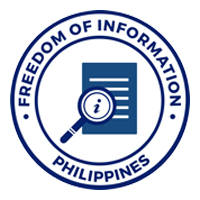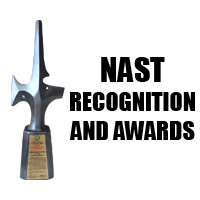The National Academy of Science and Technology (NAST), in cooperation with the UNESCO, conducted the Second Consultative Meeting on Engineering Technology and Engineering Technician Degree Programs on 19 September 2013 at the Traders Hotel Manila. The meeting was a sequel to last year’s successful launch of the UNESCO project on Engineering Technologist/Technician. It aimed to address and discuss issues revolving around engineering technology and engineering technicians program.
The consultative meeting was led by Acd. Reynaldo B. Vea, chair of the NAST’s Engineering Sciences and Technology Division (ESTD) and concurrent Chair of the UNESCO S&T Committee. He is also the president of the Mapua Institute of Technology. He was joined by Engr. Lyndon R. Bague, member of CHED’s Technical Panel of Engineering Technology and Dean of the College of Engineering, Technological University of the Philippines and Ms. Irene M. Isaac, executive director general of TESDA. Dr. Melito A. Baccay, professor at the College of Engineering, Technological University of the Philippines was tasked to present the synthesis while Acd. Alvin B. Culaba, member of the NAST’s ESTD served as the moderator and master of ceremonies.
Acd. Vea discussed the meshing of the engineering technology and engineering technician academic programs. He discussed the professional competencies required of an engineer, engineering technologists, and engineering technicians. He said engineers are expected to work on complex problems, engineering technologist, are expected to work on broadly defined problems, while engineering technicians are expected to work on well-defined problems. He also presented sample curricula on Civil Engineering Technology and Mechanical Engineering Technology from British Columbia Institute of Technology and Centennial College Toronto citing the scope/coverage of topics or core curriculum needed to be taken in the program. According to him, the Canadian curricula were designed based on the ladderized approach.
Executive Director Isaac on the other hand, discussed the ASEAN Qualifications Reference Framework (AQRF), which will serve as a translation device to enable comparisons of qualifications across participating ASEAN Countries. The AQRF aims to support and enhance each country’s national qualifications framework or system while providing a mechanism to facilitate comparison and transparency. It will cover senior schooling, Technical and Vocation Education and Training (TVET), and higher education. In addition, she shared updates concerning the Philippine National Qualifications Framework (PNQF), a national policy that describes the levels of educational qualifications and sets the standards for qualification outcomes. PNQF aims to (1) establish national standards and levels for outcomes of education and training, skills and competencies; (2) support the development and maintenance of pathways and equivalencies, which provide access to qualifications and assist people to move easily and readily between the different engineering and technology sectors and between these sectors and the labour market; and (3) align the PQF with international qualifications framework to support the national and international mobility of workers through increased recognition of the value and comparability of Philippine qualifications. She also shared her inputs on the competency standards agreement of the ASEAN Construction Federation (ACF) an alliance of the constructors associations of the ASEAN nations which aim to promote harmonization of construction skills standards across ASEAN countries to increase productivity and value creation of their respective workforce.
Engr. Bague presented his paper entitled Curriculum Maps for the Engineering Technology Programs. He discussed the proposed Bachelor of Engineering Technology Program and pointed out that engineering and engineering technology careers are two different paths that are sometimes overlapping. Engr. Bague said that the proposed programs under the new curricula are designed to produce graduates who have strong foundation in the relevant sciences and technology courses to contribute to society’s innovation, enterprise, and leadership. The proposed programs will focus primarily on the applied aspects of science and engineering aimed at preparing graduates to practice in the technological spectrum closest to product improvement, industrial processes, and operational functions. The intended outcomes of the proposed program include: (1) application of knowledge in mathematics, science, engineering fundamentals and an engineering specialization to define and applied engineering procedures, processes, systems or methodologies; (2) identification, formulation, research literature and solve broadly-defined engineering problems reaching substantiated conclusions using analytical tools appropriate to their discipline or area of specialization; and (3) design solutions for broadly-defined engineering technology problems and contribute to the design of systems, components or processes to meet specified needs with appropriate consideration for public health and safety, cultural, societal, and environmental considerations, among others.
Engr. Bague also discussed about the Philippine Education System, the simplified Philippine qualifications framework (PQF) as a result of the consultations made with stakeholders, where it outlines the 8-level qualifications covered by the PQF starting from National Certification (NC) I up to Doctoral and Post Doctoral programs. Lastly, he presented the K to 12 Curriculum Model showing the core curriculum and the career pathways our students may opt in the future.
Dr. Baccay presented the synthesis of the meeting. He commented that consultative meeting was very enlightening and challenging. It discussed how the Philippines can prepare Filipino professionals, workers, learners, and industries for the 2015 ASEAN Economic Community by providing a deeper understanding of the concepts, principles, and processes of the PQF, ASEAN Qualifications Reference Framework and their relationship towards recognition of qualifications within ASEAN regions.
The consultative meeting was attended by 50 participants from different key institutions and agencies.











